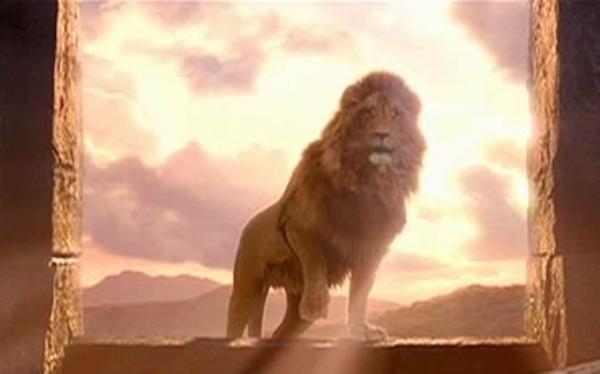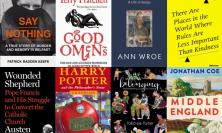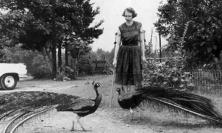As Prince Caspian – the latest in the Narnia series – hits the cinemas, James Hanvey SJ explores the growing popularity of ‘fantasy epics’ and what this tells us about the challenge of communicating the Gospel in a culture that has become disenchanted with Christianity.
In his history of post-war Europe, Tony Judt argues that with, the end of the cold war and reintegration, many European nations are recovering their memory. The loss or suppression of memory, whether personal or collective, can be an intentional strategy for recovery, one that is necessary to create a safety zone from the disruptive horror of the past and establish the possibility of a credible, unthreatened future. Whether we accept Judt’s thesis or not, it is evident that post-war Europe has slowly been losing its cultural memory of Christianity. It is difficult to know if this is a deliberate strategy for survival and reconstruction or the result of the quiet but relentless erosion of faith, and faith in religion, under pressure from the new, secular orthodoxies of contemporary society with their own versions of salvation.
The loss of Christian memory signals a significant and profound cultural, intellectual, and psychological, as well as religious, shift. This is not only about a collapse in the content of belief, it is about the way in which reality is perceived and understood. For centuries Europe has been shaped by a Christian narrative and imagination. The visual signs of its presence are still there in the churches and the spires, the art, the place names and the rhythms of time – even secular time – including Christmas and Easter. But these exist rather like artefacts in a museum. For many they have ceased to play any significant role in their lives and they need now to be accompanied by explanations which are met with surprise or whimsy or maybe just a faint hint of nostalgia. We live in a world that has lost its innocence and is no longer sure that it wants to remember what it was like. Perhaps innocence itself is also some sort of myth. Yet disenchantment produces its own chronic weariness – so how to delight, refresh, free the imagination and the heart? Where is the wardrobe through which we might discover another world and there learn again how to believe?
The film Stardust, based on the novel by comic and science fiction writer Neil Gaiman, presents an intriguing if unconscious strategy. The film is almost classic fairytale narrative with evil versus good, the passing between different reality worlds and the effect of events in one on lives in the other, the search for true identity, betrayal, heroic tests and, of course, love. It is all accomplished in a light, witty, tongue-in-check sort of way yet its underlying message is classical and ultimately Christian: it is about the triumph of love and truth over evil and treachery; it is not afraid to ask what eternity might be like and how it would somehow be incomplete if we had to live it without love. These are the classic themes of enchantment. They are the stories we need to hear because they are the values we need to live by if we are to continue to have faith in life itself. However, our disenchanted and knowing age cannot take these things straight. We need to find ways of delivering them which recognise our own sceptical, ‘fallen’ cultural state. In the words of Philip Larkin, in Vers de Société:
No one now believes the hermit with his gown and dish
Talking to God (who’s gone too); the big wish
Is to have people nice to you, which means
Doing it back somehow…
And in Aubade, Larkin gives the final summing up of religion’s decorative deceit before the reality of death:
This is a special way of being afraid
No trick dispels. Religion used to try,
That vast moth eaten musical brocade
Created to pretend we never die…..
That past tense says it all. Yet even in the face of the banal, quotidian nihilism that stalks us in Larkin’s world, we still somehow need to believe, to make sense of things. The solution in Stardust is to deliver the enchantment with humour, irony, to play us at our own arch-game and, because we are all in on the joke, we can somehow indirectly give permission to hear what we could not accept directly, yet need if we are to go on believing. It is no accident therefore that that in recent years we have been treated to a whole world of cinematic and literary fantasy enchantments which all take up the grand primal narratives that we can no longer take neat but somehow need to work with. They are primal, not primitive; they touch on the most fundament hopes, fears, experiences; they are ways of organising reality, and especially the threat of chaos, so that somehow we can make sense of our lives and our purpose and affirm foundational values. The Christian narrative, however, is no mere enchantment, and a problem arises when we think we can somehow recover it by shifting genres.
Walt Disney has been one of the great modern ‘enchanters’ and it is not surprising, therefore, that the Disney studios should embark on The Chronicles of Narnia by C.S. Lewis. Like Tolkien’s Lord of the Rings, Lewis’s Chronicles are subtle and delicate. Both are concerned with the mythic struggle of good and evil, but in quite different ways. For Tolkien, the fundamental point of reference is the primal myth: the battle between light and dark, life and death, good and evil which encompasses all worlds. He presents the epic cycle of the hero-saviour who, though vulnerable, must make a journey into darkness which is spiritual as well as physical and do battle with forces that threaten to overwhelm either by power or seduction. The consequences of being defeated are present in the drama and contrasted in Frodo Baggins and Smeagol/Gollum and the lure of the ring. Such a journey is always precarious, it is as much a journey of self-knowledge as of wit and strength, yet the fate of the world or the people hang in the balance. The final apocalyptic triumph is achieved through courage, generosity, friendship and faithfulness, but it is a costly victory and is not secured without heroic sacrifice.
In The Chronicles of Narnia all these classic themes are also present, but in a totally different key. The point of reference for Lewis is not so much the primal myths – not even John Milton’s Paradise Lost/Regained as is the case with Philip Pullman – but Dante’s Paradiso. The journey is the journey of the Christian soul, its struggles, temptations and the pedagogy that the journey/pilgrimage must entail. The four Pevensie children, each in some way encapsulating an important strength or virtue, think that by escaping to Narnia they escape school, but they come to realise that they are enrolled in a much more serious lesson. Narnia is no enchanted country, it is one that is present within the world – in fact there are many Narnias (cf. The Last Battle). Lewis, like Tolkien and Chesterton, was influenced by the 19th century Scottish writer and creator of sacramental fairy stories, George MacDonald. However, MacDonald’s mythopoetic writings operate with a concept of the ‘symbolic’ in which the world of outward appearances contains divine truths which can be discovered by a ‘true’ person. Each discovery leads that person ever nearer to God. It is the vocation of the poet to educate us in perceiving these truths and reading in the world the great book of symbols. C.S. Lewis’s creation of Narnia is in this tradition. It is a world of the spirit, the imagination, and of graced enchantment, but it is also threatened; its harmony is precarious, its light easily obscured, frozen or distorted. Whether it is the White Witch, the Telmarines and King Mizaz or the cynicism of the dark dwarf Nikabrik, the mystery of evil is present; the soul and the spiritual realm are as much in danger as the ordinary physical world. Indeed, the two are closely linked because we journey in both. Hence the shifting of time, the doors that are created to move between worlds and, of course, to move with imagination and faith between our different experiences of reality. There is also Lewis’s unique and deliberate eclecticism. Narnia is populated by mythical creatures as well as human beings. We have met them before, the Minotaurs, the centaurs, the fauns, the Maenads, the talking trees and animals. These are all products of the imagination – art and faith – they open for us the great ancient stream of the heart and mind, its other language with which to capture the truths which are not visible to the alienated eye or bitter exile. In putting all these creations into his story, Lewis is placing us and all our questing within a tradition, and although it is essentially a pagan one, it nevertheless has a Christian intuition.
This is especially true of the animals and the mythological creatures, who can be generous and noble, funny and wise – they too are suffering an exile from their Narnia. There are lessons to be learnt from the courtly mouse, Reepicheep – the proof that a mouse is superior to a man! – and the dignified centaur, Glenstorm, or the wise compassion of Trufflehunter, the badger. But these creatures, the plants and the trees, the whole living landscape of Narnia, are not the magician’s trick. The ‘magic’ of Narnia points another way. The animals want the ‘son of Adam’ to be their king, for the ‘son of Adam’ holds a privileged place in creation: “You Dwarfs are as forgetful and changeable as the Humans themselves. I’m a beast, I am a Badger what’s more. We don’t change. We hold on. I say great good will come of it. This is the true King of Narnia. And we beasts remember, even if Dwarfs forget, that Narnia was never right except when the Son of Adam was King…….It’s not Men’s country (who should know that better than me?) but it’s a country for a man to be king of. We Badgers have long enough memories to know that….”
In his lectures on ‘The Abolition of Man’, among other things, Lewis is concerned to expose the dulling of the humane sensibilities and aesthetic intuitions that make human existence rich and complex, but he is also concerned to expose the price of our alienation from the natural world. This is no late nostalgic romanticism, but an acute and timely appreciation of the danger in pursuing a strategy of domination which is also reductionist because it sacrifices the whole to mastery and dissection of the past. The ultimate outcome is the loss of what is human because we have forgotten the relationship in which we are mediated to ourselves:
There is something which unites magic and applied science while separating both from the ‘wisdom’ of earlier ages. For the wise men of old the cardinal problem had been how to conform the soul to reality, and the solution had been knowledge, self-discipline, and virtue. For magic and applied science alike the problem is how to subdue reality to the wishes of men: the solution is technique; and both, in the practice of this technique, are ready to do things hitherto regarded as disgusting and impious…..
Prince Caspian, the fourth in the Chronicles, has just been issued as a visually handsome film. It continues from The Lion, the Witch and the Wardrobe and although it takes some liberties with the book, it largely captures the narrative. But Prince Caspian is the most difficult of the series to adapt to screen or stage because it has an absence at its centre: Aslan. The theme of absence is there from the start. It is the absence of the Kings and Queens (the Pevensie children); the suppression of the ‘old stories’ – the ancient history and truth of Narnia; the absence of beauty, harmony, and the integration of all the levels of creation – spiritual, imaginative, animal and natural; Cair Paravel is in ruins – the poetry in things is dead. It is not the frozen landscape of the White Witch but the loss of mystical vision and faith – that capacity to see into other worlds – that has died. Its great symbol is the absence of Aslan. Only Lucy, in a moment of enchanted epiphany, well captured in the film, sees him and keeps faith with him. The others, for all their goodness – and Caspian allies himself with the children – decide that they must take on the evil on their own, for they can no longer rely on Aslan’s return. This is not just the perennial attraction of Pelagianism, it is something ultimately much deeper. It is a failure of faith, imagination, even in the noble and the good. No kingdom can be rescued from despair by actions predicated upon despair itself, no matter how well intentioned and generous. So, at some cost, they must all learn that they need Aslan.
In the Chronicles, Prince Caspian, presents us with a very contemporary experience. It is not just that our secular culture is losing its memory of Christianity, it is recognising absence and silence. It is a culture in mourning, for the human imagination with all its technological ingenuity cannot ultimately make good that absence. There is a realism in Lewis’s Narnia because he is not concerned to enchant us into the magic of a ‘cheap grace’ but to remind us of the absence. Part of the lesson of the original inhabitants of Narnia and of the children is to learn what the absence teaches. This is neither despair nor anger, nor resentment that Aslan has abandoned them; rather it is how to listen to the absence, to long for his return and to use our faith-imagination to nurture the vision and the endurance that comes with it. Lewis presents us with the keepers of memory (human and animal) who are also the faithful teachers, and with the struggle to keep faith and hope alive and translate that into defeat not only of the Mizar and the Telmarines, but of despair itself. He asks of us a certain creative boldness; an intellectual and imaginative penetration that gets to the real ‘chronicle’ of Narnia and the journey which it unfolds. They must enter into the school of faith, of hope, of waiting, and it is up to the mystics and the poets (Lucy and Prof. Cornelius) together, to carry the saving memory for the kingdom, its ancient wisdom that also gives birth to hope. Aslan does come, he does roar, and loss is changed to victory and the kingdom is restored. Yet, there is sacrifice, and there is also sadness too, for the children must continue their journey; their quest is not yet finished. Above all, Lewis asks of us an imaginative seriousness and engagement with the central character, Aslan, in his presence and in his absence, until, in the final novel in the series, the Last Battle, we are taught to see, ‘world within world, Narnia within Narnia’ and granted the final endless vision of Aslan who ‘no longer looked to them as a lion’. So we leave the ‘shadowlands’ and ‘at last they were beginning Chapter One of the Great Story which no one on earth has read: which goes on forever: in which every chapter is better than the one before.’
The Chronicles of Narnia are attractive to cinema, an industry that has an especially vast technological competence for creating special effects. It is tempting to see in its appeal a recovery of the traditions of symbol and myth, the memories, the narratives of good and evil, truth and value which our culture seems to have disowned. But computer-generated effects are no substitute for the imaginative insight and grasp of symbolic resonances of the Chronicles. Unlike the novels themselves, in giving in to the seduction of technology Disney’s projectrisks becoming a testimony to the erosion of memory rather than its reawakening. Like the nations of Eastern Europe before reunification, it seems that what we really crave is a safety zone; fantasy storytelling which enables us to project for ourselves an unthreatened and unthreatening future.
In Narnia, C.S.Lewis does not give us a place of safety defended and secured by mythopoetic skill. He offers us a challenge which is present in faith itself, and this may be an important clue for the situation in which the Church currently finds itself. When faced with a resistant secular culture that believes that it has already heard the Christian narrative, believed it and discovered that its promises have failed or obstructed a more liberating realism, the temptation for the Church is either to ‘repackage’ the story – to deliver its core values indirectly – or to separate itself and live within its own defined and defended boundaries. Yet, if we take our cue from Lewis, we must first enter into the experience of absence and the inability to trust that it brings. We must understand the nature of mourning, of grieving for a lost hope and an irrecoverable dream. This, of course, is the greatest journey of faith into the dark night, except that this dark night is not necessarily located in our faith, but in the faith-less-ness of contemporary culture. In grasping this, we may discover that the hostility and the indifference of secular culture has a different source, one that cannot be addressed through arguments alone. The great challenge to our imagination is not so much to imagine the light but the darkness. If we can do that – and it is only a faith tutored by the Incarnation, the dead and risen Christ, that can do that – then we may discover that someone has already gone before us. In the words of the Psalmist, ‘if I lie in the grave you are there…..even the darkness is not dark for you, and the night is as clear as day.’ This, of course, is no enchantment; it is the discovery of grace and the patience and courage that it bestows. Above all it is the faithfulness of God who waits for us.
James Hanvey SJ is Director of the Heythrop Institute for Religion, Ethics and Public Life.
![]() Read Thinking Faith's review of The Chronicles of Narnia: Prince Caspian
Read Thinking Faith's review of The Chronicles of Narnia: Prince Caspian
![]() Heythrop Institute for Religion, Ethics and Public Life
Heythrop Institute for Religion, Ethics and Public Life






